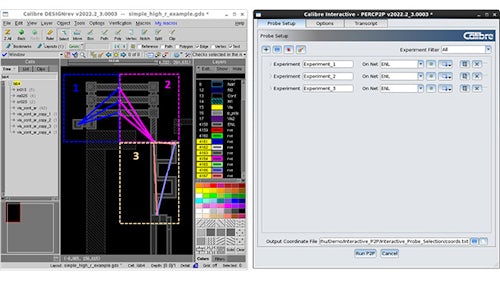Interactive point-to-point resistance simulations simplify net segmentation for faster, easier debug of high resistance segments
Interactive point-to-point resistance simulations speed up and simplify debug of resistance violations
Point to point (P2P) resistance simulations calculate the effective resistance of the layout traces between points on an IC net trace, and let the designer know that there may be too much parasitic resistance from a particular net trace that would affect the reliability or performance of the circuit. However, traditional P2P simulation runs are time-consuming, and often require multiple iterations. The Calibre interactive P2P GUI enables designers to quickly select and place additional probe points anywhere on a net to get resistance measurements for individual net segments, rather than trying to work with either the effective overall resistance or all the individual polygon data throughout a CD run. Designers can quickly and iteratively increase the resolution of the net segments until they locate the root cause of the high resistance.
